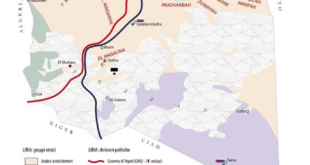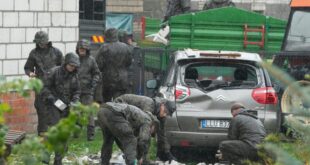The shake-up and the deployment of the strategic heavy bombers, changes in Iraq, and in Afghanistan as well as question marks about the US role in Syria.
American B-52s, the massive strategic bombers, arrived in the Middle East on Saturday. They are part of the Fifth Bomb Wing at Minot AFB in North Dakota.
These veteran, giant aircraft were last deployed in the region in May 2019 and the US Central Command says they are here to “deter aggression and reassure US partners and allies.”
The B-52s have been sent to the region as the US appears to be drawing down forces in Iraq. The Pentagon has said that hundreds of troops are leaving Iraq and Afghanistan.
As the US seeks to end twenty years of involvement in Afghanistan, US Secretary of State Mike Pompeo met with Taliban officials this weekend, an interesting change of US policy from years ago, when the US was at war with them. But the US may soon be claiming to work with Taliban “moderates” against Afghan extremists, or hand Kabul back to the Taliban.
The bombers that have arrived will be integrated into “at least four other national defense elements,” according to reports. There are many questions about their deployment, which comes amid shakeups at the US Department of Defense.
Christopher C. Miller, the new US acting Defense Secretary, named by US President Donald Trump on November 11, has been moving things around. He directed the assistant secretary of defense for special operations to report directly to him in recent days. The change is said to be in line with bolstering the department’s efforts to remain ahead in the great power competition with Russia and China.
The US Army is also consolidating in Europe and Africa into a new command called USAREUR-AF. As part of the new command structure, US Army Africa/Southern European Task Force was re-designated as the US Army Southern European Task Force, the US Army said.
“This consolidation enhances global and regional readiness in support of the National Defense Strategy,” said Ryan D. McCarthy, Secretary of the Army.
“The new structure will increase command and control effectiveness, flexibility and the capability to conduct large-scale, joint and multi-domain operations.”
The shake-up and the deployment of the B-52s brings changes in Iraq and in Afghanistan and poses questions about the US role in Syria. All mean that the next several months could be fraught with challenges in the region.
The B-52s flying in, appear largely a symbolic gesture, since the US doesn’t need them for operations at the moment. It has ample warplanes already based in the region, such as at the UAE’s Dhafra air base and an aircraft carrier group in the vicinity and massive resources across its Central Command area.
The B-52s are supposed to send a message, the kind of messages that the US likes to send to allies.
In 2018, the B-2 stealth bomber was deployed to Guam, and in August this year to Diego Garcia. It’s all about showing off US capabilities with aircraft that rarely see combat. America’s enemies likely know this already, so it’s not clear what is achieved.
US allies in the Middle East also know this, and they have large air forces too. It’s not as if Israel, Egypt, and others lack their own firepower. The UAE is seeking to acquire the US F-35 in a deal that the current administration is trying to get approved but Congress and other sectors may seek to slow down the push for the stealth jet’s deliveries, which anyway, will take years to implement.
For now, the B-52s will suffice as a clear message, apparently.
 Eurasia Press & News
Eurasia Press & News



